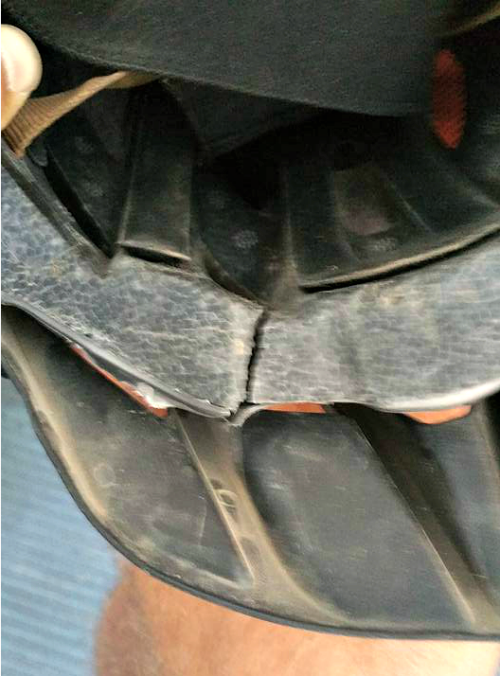
Mark’s bicycle helmet did it’s job when he face planted at Mammoth Mountain recently.
Helmet safety is near and dear to my heart as I sustained a mild concussion from a fall years ago from a halt (a fall can happen at any gait, people), and just last week my husband had a mountain biking spill in which his helmet broke (but his head did not).
Please read this important helmet safety post written by Lyndsey White of Riders4Helmets! International Helmet Awareness Day is coming up again September 17th.
Lexington, KY (August 31st 2016)-You’ve seen those commercials talking about replacing your mattress after every eight years—after all, that’s a lot of dead skin cells, dirt, dust mites, etc., that gathers every night. And when it comes to your favorite pair of riding pants, you don’t think twice about replacing them when they’re starting to be worn thin, or maybe showing a little too much wear and tear. But do you even think about how old your helmet is?
Go ahead, take a moment from reading this to find your helmet and look at the tags inside. We’ll wait…
Did you see the date? Or is it so faded you can’t tell if that’s a three or an eight? Can you even remember when you purchased it? It might just be time to buy a new helmet.
As we prepare to celebrate the seventh annual Riders4Helmets International Helmet Awareness Day on Saturday September 17th, we want to applaud everyone who doesn’t think twice about putting on a helmet before swinging their leg over a horse. They are the ones that know that wearing a helmet can help reduce the chance of a lethal head injury.
But if you’ve worn helmets most of your life, you might be the type to just pick up the same old helmet that has gotten you through your junior rider years and onto your adult classes because…well, it’s “broken in” and more comfortable. But wearing a helmet that’s passed its limit of effectiveness might not fully protect you in the way an updated helmet can.
Did you know that helmet manufacturers generally recommend that you replace your helmet every four to five years? Think about all the time you spend in the saddle—the liters of sweat, the coats of dust, and drenching from the rains all take a toll on your helmet and causes the Styrofoam inside to break down, reducing its effectiveness at protection.
If you’ve had an accident while wearing your helmet, no matter how minor it was (i.e., your head just barely hit the ground), that can reduce the effectiveness of the helmet’s protection. Damage to the helmet might not be visible to the naked eye, so you can’t assume there is no issue after a fall. Of course, any catastrophic incident can render a helmet useless and cause for an immediate replacement.
And when you do go to purchase a new helmet, take precautions when it comes to proper fit and ensuring the date of manufacture. When trying on helmets, be sure to wear your hair the way you would any time you ride—if you prefer a bun, wear a bun, if you prefer a ponytail, wear your hair in a ponytail—then go shop.
Also, check the manufacture date on the inside of the helmet, no matter if you’re purchasing new or used. Take caution when considering purchasing a used helmet, since the helmet may have sustained damage from a previous incident that you can’t see.
Don’t think that only children or novice riders should be the ones to wear an approved helmet—there has been no statistical correlation between skill level and the likelihood of an injury when it comes to equestrian sport. You can even have a catastrophic injury from falling off a horse that’s standing still.
If you like to think with your head, take a moment to consider your head first and wearing proper protection.
To find out more about International Helmet Awareness Day, visit Riders4Helmets and learn how leading helmet manufacturers around the globe are offering special discounts to help keep you safe in the saddle this year.
Your Turn: How will you be participating in International Helmet Awareness Day this year? How has a helmet saved your noggin?


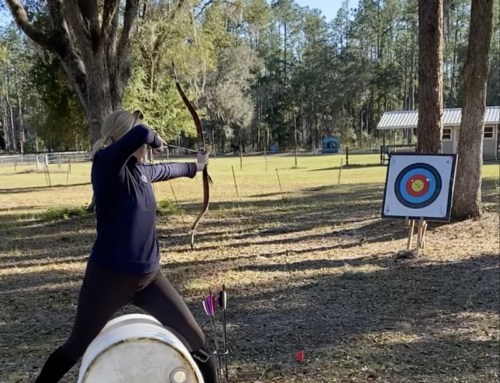
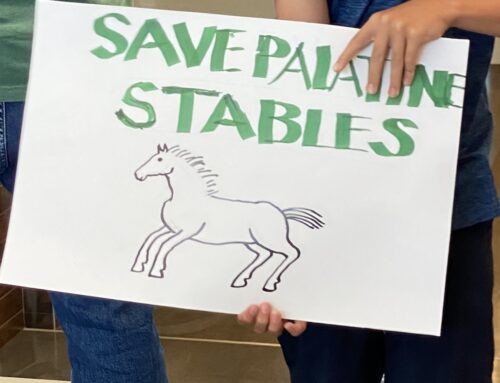
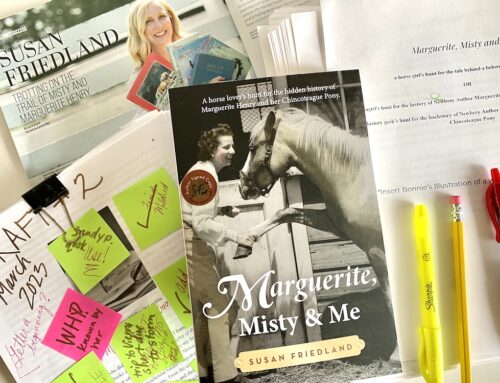
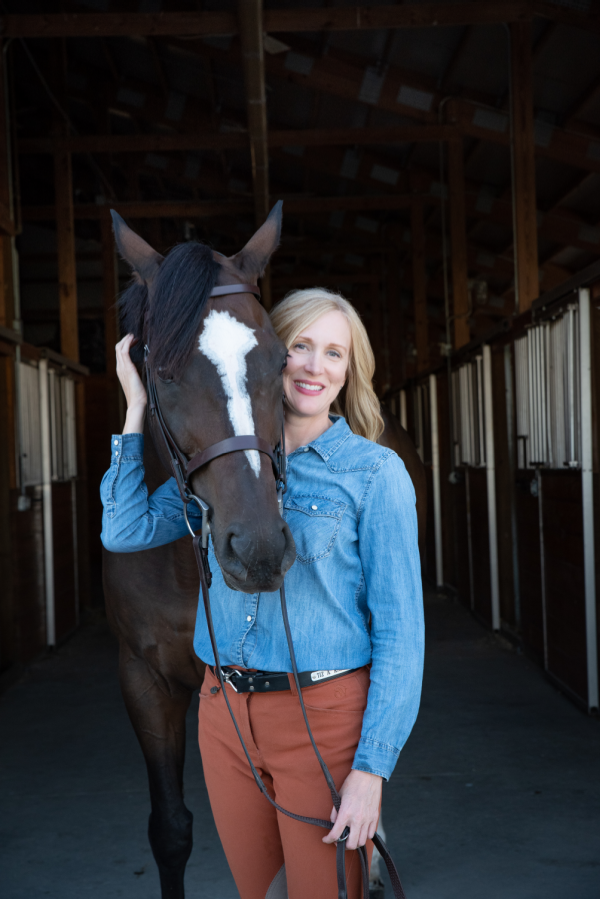

I never ride without a helmet – even Western. I can’t believe some places let people trail ride without one. I sometimes travel with my own if I’ve booked one or more rides
I know! I have seen trail rides where the terrain is no big deal. . . except for large jagged rocks strewn here and there. All it takes is for one normally steady horse to trip. I’m glad you’re a helmet believer.
Also, no trail riding in flip flops… I can’t believe I’ve seen pics of this. Yes, you’re on vacation … but. I wouldn’t recommend riding at a place that allows this.
I heard someone once say, “Anyone who thinks their brain is worth protecting wears one!” Good point. We only get one brain in this life! My hair might get gross and sweaty, but one little shower fixes that. A busted up skull takes a long time (if ever) to heal.
I was very perplexed to see that in California almost none of the western riders and less than 50% of the English riders wear one – probably because of “mixed” English/western barns, and the “you’re a scared sissy if you wear a helmet” culture in western, helmets are not a rule. Most barns back east are English-only, and anything with a jumping program is likely to have a 100% helmet use rule. Boggles my mind that in this day and age people would choose vanity and a TBI over safety. And honestly, I think helmets LOOK better in all disciplines than bare heads/top hats/etc. My eyes more used to them than not.
“Boggles my mind that in this day and age people would choose vanity and a TBI over safety.” and such to make helmets “cool” in the Western world.
WORD! I noticed when I played tourist at Monty Roberts farm a year ago the students who were there gentling horses in the round pens all had helmets on. It made me wonder when wearing a helmet the entirety of being around one’s horse will be commonplace. It seems like we just need a few prominent cowboys
So great that you are writing about this. When I grew up riding 30 years ago no one wore a helmet. I am glad this has changed as a bump on the head could change everything dramatically.
Thanks, Elizabeth. The funny thing is, when I grew up riding, we wore helmets (mostly) but they would not have protected our heads during a fall. They were the thin “hunt caps” with the elastic band that you could place under your chin for protection OR flip up and wear across your brim. I guess if you think about it, nobody even wore seatbelts in cars back then. As we progress we become more safety conscious it seems.